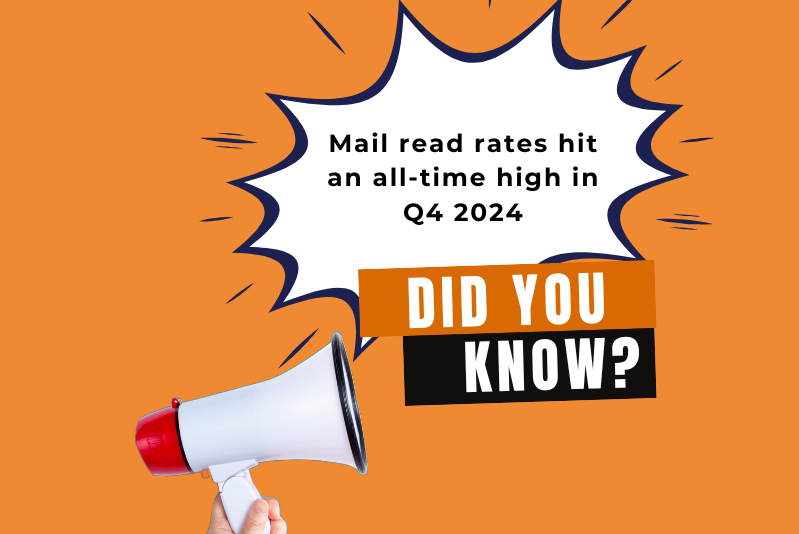Print and Post your mail directly from your desktop with a click of you mouse. Our hybrid mail solution allows customers to send a single letter for as little as 84p.

Unlocking Q4 Success: How Mail Engagement Drives Consumer Action and Boosts Sales
According to the latest JICMail report, an impressive 77% of mail was read or looked at during this time, marking an all-time high since tracking began eight years ago. This increased engagement, particularly in the grocery and travel sectors, showcases the power of direct mail effectiveness in capturing consumer attention. With an average business mail interaction of 4.8 times over 28 days and a substantial lifespan in the home, the mail channel proves to be a robust component of Q4 marketing strategies. As the competition for consumer attention intensifies, leveraging these insights can provide businesses with a competitive edge in optimizing their marketing tactics and enhancing consumer response rates.
Mail Engagement in Q4
In Q4, mail engagement took center stage as businesses strived to capture consumer attention through effective marketing strategies. The increasing reliance on mail channels highlights their importance in delivering results during a competitive period. Direct mail, in particular, played a crucial role due to its ability to engage consumers consistently and effectively. By understanding these dynamics, businesses could tailor their marketing tactics to maximise impact and drive consumer action.
Direct Mail Effectiveness
Direct mail effectiveness stems from its capacity to engage consumers on a personal level. In Q4, this form of communication proved crucial as it offered a tactile and personalised experience that digital media often lacks. According to the latest insights, direct mail interaction rates reached unprecedented levels, with business mail observed 4.8 times over 28 days. This frequency underscores its utility in maintaining consumer interest over extended periods.
Furthermore, the effectiveness of direct mail lies in its longevity. The average lifespan of business mail in homes extends to 8.6 days, providing ample time for messages to resonate. This prolonged presence in consumers’ homes facilitates repeated exposure to marketing messages, reinforcing brand recall and increasing the likelihood of consumer action.
A direct mail case study highlights its benefits, particularly for supermarkets and retailers, which recorded above-average response rates. Loyalty reward statements emerged as effective drivers of consumer response, showcasing the potential for direct mail to convert engagement into tangible outcomes.
Key takeaways from direct mail include:
-
Enhanced engagement through personalised messaging.
-
Extended lifespan in the home, boosting brand recall.
-
Proven effectiveness in driving consumer action in sectors like retail and finance.
To leverage direct mail in Q4, businesses should focus on personalization and creating meaningful offers that resonate with their target audiences.
Consumer Response Rates
Understanding consumer response rates is critical for evaluating the success of marketing efforts. In Q4, mail engagement not only attracted attention but also translated into action. According to the JICMail report, 6% of mail led to a purchase, 15% to discussions, and 8% prompted website visits. These statistics highlight the mail channel’s capacity to drive consumer behaviour effectively.
Consumer response rates differ across mail types. Direct mail and door drops, for instance, exhibit distinct response patterns. Supermarkets and financial services recorded significant engagement, with door drops proving particularly effective when combined with vouchers or special offers. These insights reveal the importance of tailoring content to align with consumer expectations and preferences.
To optimise consumer response rates, businesses should consider:
-
Crafting messages that encourage action, like special offers or limited-time deals.
-
Utilising a mix of mail types to target different segments effectively.
-
Monitoring and adjusting strategies based on response data to maximize outcomes.
By focusing on these strategies, businesses can enhance their consumer engagement and drive higher response rates in the competitive Q4 period.
